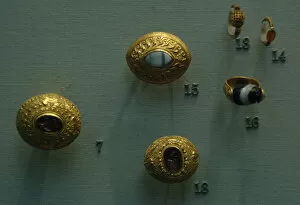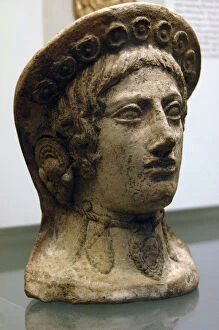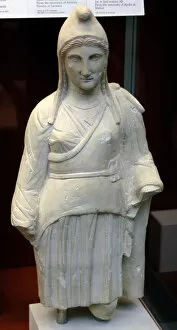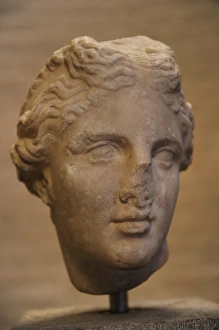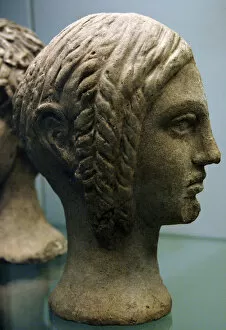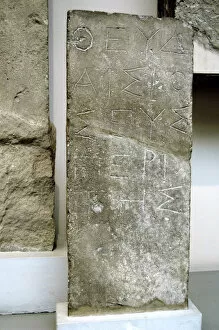300bc Collection
"Exploring the Rich Artistic Legacy of 300 BC: From Oscan Inscriptions to Etruscan Treasures" Step back in time to the ancient world of 300 BC
All Professionally Made to Order for Quick Shipping
"Exploring the Rich Artistic Legacy of 300 BC: From Oscan Inscriptions to Etruscan Treasures" Step back in time to the ancient world of 300 BC, where a plethora of captivating artifacts and masterpieces await. Delve into the mysteries of this era through a diverse range of historical treasures that provide glimpses into different cultures and artistic expressions. One such artifact is the Stela with Oscan inscription, dating from 300-100 BC. This boundary-marker reveals traces of an ancient language, offering valuable insights into the linguistic landscape of that period. Another remarkable find is the exquisite gold Etruscan jewelry from around 350-300 BC. Crafted with meticulous detail, these pieces showcase the exceptional skill and craftsmanship possessed by Etruscan artisans. A statue depicting Artemis Bendis wearing her divine attire also captures our attention. This sculpture stands as a testament to both Greek and Roman influence on art during this time period. The head of Aphrodite, sculpted around 300-290 BC, emanates beauty and grace. It serves as a reminder of how ancient artists sought to immortalize their deities through breathtaking works like this one. Etruscan votive heads further demonstrate their devotion to religious practices during this era. These terracotta sculptures offer us a glimpse into their spiritual beliefs and rituals. Moving beyond figurative representations, we encounter a limestone grave stele adorned with a Greek epitaph dedicated to Theudaisios. This poignant memorial provides insight into burial customs prevalent at that time. Greek art makes its presence felt through an intricately carved head representing a majestic horse from the fourth century BC. Its lifelike features speak volumes about Hellenistic artistic techniques employed during this period. Amongst all these treasures lies an opulent golden necklace featuring lion-head terminals—a symbol often associated with power—influenced by various cultural influences prevalent around 300 BC.



